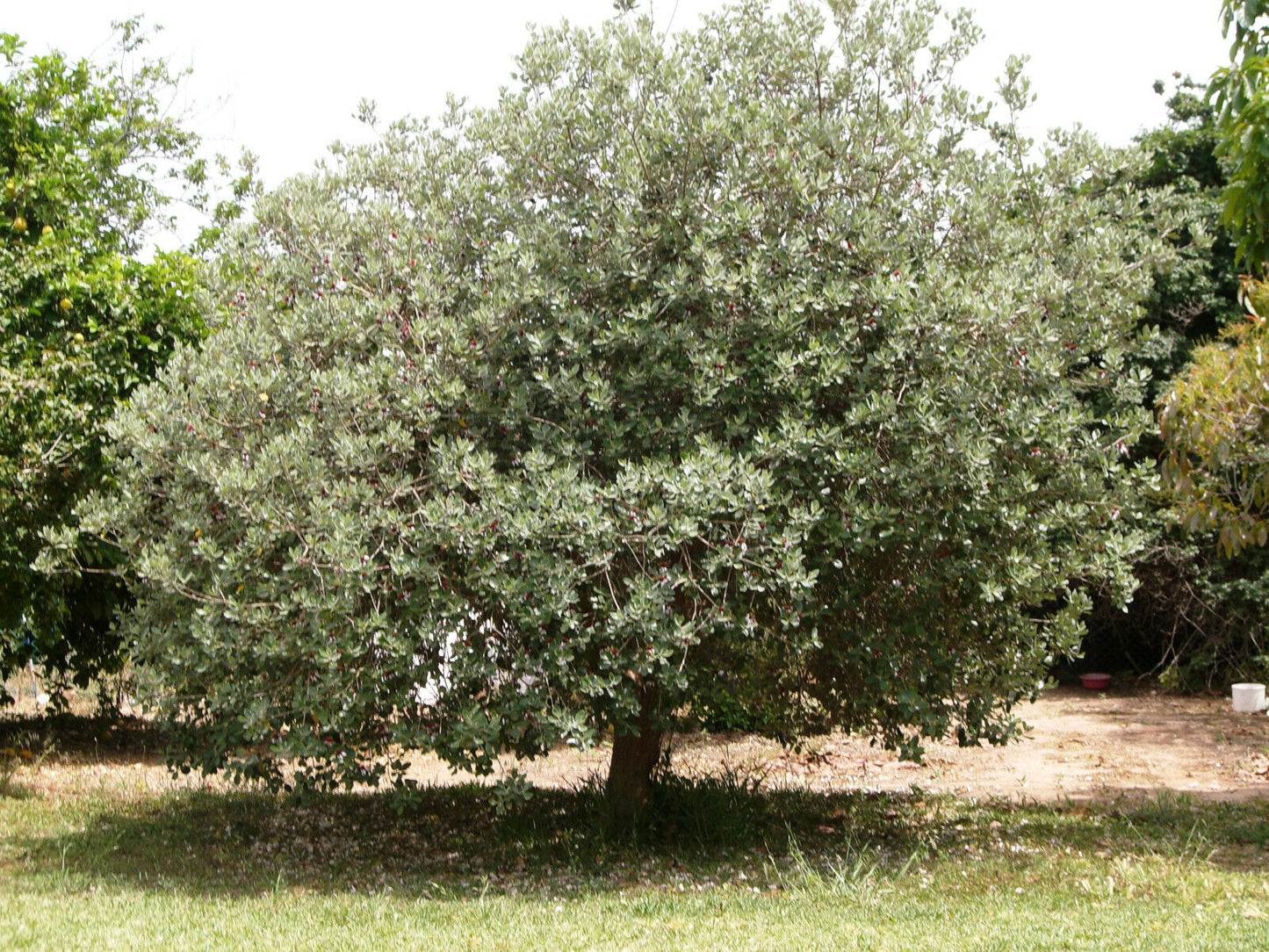-
ACCA SELLOWIANA (FEIJOA)
ACCA SELLOWIANA (FEIJOA)
Couldn't load pickup availability
MINIMUM TEMPERATURE SUPPORTED -12°C
(DATA REFERS TO AN ADULT PLANT IN OPTIMAL HUMIDITY AND SOIL CONDITIONS)
FROM WIKIPEDIA
Feijoa sellowiana (( O. Berg ) O. Berg , 1859) , left. Acca sellowiana , commonly known by the name Portuguese Of feijoa or with the Spanish one of guayabo of Brazil, is a shrub evergreen belonging to family from the Myrtaceae [1] . He is between one and seven tall meters and is native to the highlands of Brazil southern, Argentina northern and some areas of Colombia , from Uruguay ; prefers mountain areas.
It is widely cultivated as a garden plant and as a fruit tree.
It should not be confused with the guava ( Psidium guajava ), although belonging to the same family.
Etymology
The name feijoa And Portuguese it was chosen to remember the naturalist João da Silva Feijó , who was part of the group of scholars who founded the Natural History Museum of Lisbon , coordinated by Italian Domenico Agostino Vandelli , and who carried out various botanical expeditions, especially to Cape Verde .
The specific epithet sellowiana , was chosen to remember Friedrich Sellow (1789-1831), German naturalist, explorer of Brazil and Uruguay , countries of which he studied extensively Flora . Sellow was the first European to discover this species, in 1819, during a scientific expedition to the Brazilian state of Southern Rio Grande [2] .
Description
There feijoa it is usually a multi-stemmed shrub, evergreen slow growing, which can reach 4–7 m.
The leaves dark, shiny, thick, elliptical, opposite, they are about 5 cm long. The underside is felty (finely hairy). It is possible to make infusions with the dried leaves.
THE flowers , medium-small, often collected in groups, are numerous, white-pink in colour, have numerous very showy red-violet stamens. It is probable that pollination occurs in the areas of origin is also carried out by birds . The flower petals can be used for salads, as they are sturdy, crunchy and sweet; or let it melt on your tongue.

THE fruits Of F. sellowiana , have a robust green rind, translucent or yellowish white pulp, gelatinous and with numerous small, very hard seeds, the fruits are as large as plums, oval or pear-shaped, and are edible. The fruits are extremely fragrant, even if not very sweet, the flavor of the soft pulp was judged to be halfway between pineapple and the strawberry , the edible part is however modest in quantity, due to the dominant presence of peel and seeds.
The ripening of the fruit occurs (depending on the weather season) in the months of September and October. When they reach maturity, the fruits spontaneously detach themselves from the tree and fall, this is the common way to proceed with the harvest, given that the peel is robust; they are peeled with a knife, or the pulp is extracted with a teaspoon from the fruit opened in half, and they are eaten fresh. As with bananas, the harvested fruits have a short shelf life: 5-6 days if stored in a cool place. Harvesting on the ground is especially suitable for the short-term preparation of a jam, using the pulp of some apples, possibly unripe, as a thickener.
Harvesting from the tree allows you to have fruit that lasts slightly longer, but it is necessary to collect ripe fruit, i.e. one that can easily detach from the branches; for the rest, only a slight softening of the pulp and a very slight lightening of the color of the peel are the difficult signs of maturation. Fruits harvested immature do not ripen later, as happens with apples.
RICHIEDI FOTO
RICHIEDI FOTO
Scrivimi su WhatsApp al +393472475878 per ricevere foto piante in vendita






